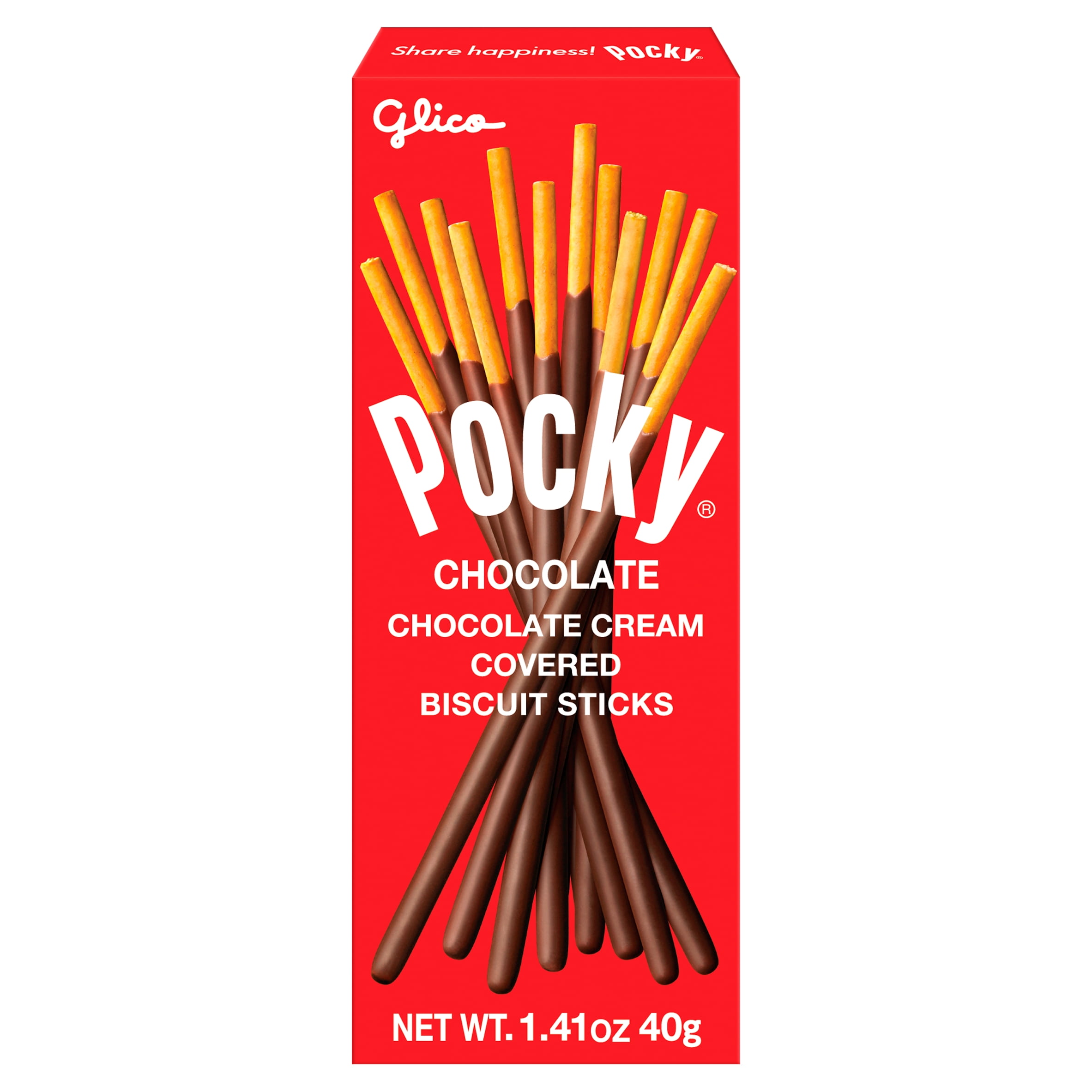Pocky Chronicles: From Sweet Beginnings to Symbolic Triumphs
Chocolate poki is a type of biscuit stick that is coated with chocolate, leaving a small part of the stick uncoated as a handle. It is crunchy, sweet, and easy to eat. It comes in various flavors, such as strawberry, matcha, cookies and cream, and more. It is also known as “Pocky” in Japan and other Asian countries, and as “Mikado” in some European countries.
How was chocolate poki invented?
Chocolate poki was invented by Yoshiaki Koma, a researcher at Ezaki Glico, a Japanese food company that is famous for its caramel candy. Koma wanted to create a new product that would appeal to young people and women, who were the main consumers of chocolate at the time. He was inspired by the traditional Japanese snack “pretz”, which is a plain biscuit stick. He decided to coat the pretz sticks with chocolate, using a special machine that he designed himself. He also named the product “Pocky”, after the Japanese onomatopoeic word “pokkiri”, which means the sound of snapping something.
How did chocolate poki become popular?
Chocolate poki was first sold in 1966, and it was an instant hit. It was the first chocolate product in Japan that was not in the form of a bar, and it was convenient to eat without getting your fingers dirty. It was also marketed as a fashionable and fun snack, with catchy slogans and cute packaging.
Chocolate poki soon expanded its market to other Asian countries, such as China, South Korea, Thailand, Indonesia, and more. It also entered the European market under the name “Mikado”, which means “emperor” in Japanese. It was licensed by Mondelēz International, a multinational food company that owns brands such as Oreo, Cadbury, and Toblerone.
Chocolate poki also became popular in the United States and Canada, where it can be found in Asian supermarkets and the international section of most large supermarkets. It is also a common sight at anime conventions and cosplay events, where fans of Japanese culture enjoy the snack.
Why do people love chocolate poki?
Chocolate poki is loved by people of all ages and backgrounds because it is more than just a snack. It is a symbol of joy, friendship, and creativity. People can share chocolate poki with their loved ones, or enjoy it by themselves. People can also use chocolate poki to express their personality, by choosing their favorite flavor, or by making their own variations. For example, some people like to dip chocolate poki in peanut butter, cream cheese, or ice cream. Some people like to decorate chocolate poki with sprinkles, nuts, or fruits. Some people even like to make art with chocolate poki, such as sculptures, paintings, or collages.
Chocolate poki is also a source of inspiration for many artists, musicians, and writers. For example, there is a song called “Pocky Game” by the Japanese band Scandal, which is about a romantic game where two people eat chocolate poki from opposite ends until they kiss. There is also a manga series called “Pocky 4 Sisters” by Ema Toyama, which is about four sisters who inherit a chocolate poki factory. Many fanfictions, comics, and videos feature chocolate poki as a plot device or a prop.
Conclusion
Chocolate poki is a snack that has a rich history, a wide appeal, and a bright future. It is a snack that brings happiness, connection, and innovation to people around the world. It is a snack that you can enjoy anytime, anywhere, and with anyone. It is a snack that you can make your own. It is a snack that you can love. It is chocolate poki, the sweetest story ever told.
Now to the fun part
Scientific Theory: The Chemistry of Flavors
Much like scientific theories unravel the mysteries of the universe, Pocky unveils the chemistry of flavors. The biscuit stick and chocolate coating represent the perfect balance between structure and sweetness. The symbiosis of ingredients mirrors the delicate dance of particles in scientific theories, creating a harmonious blend that delights the taste buds.
Sociological Theory: The Art of Connection
Pocky, in its simplicity, becomes a sociological metaphor for human connection. The uncoated handle symbolizes individuality, while the shared experience of enjoying Pocky signifies the interconnectedness of society. Sociological theories often explore the dynamics of human relationships, and Pocky, in its communal nature, becomes a tangible representation of shared moments and social bonds.
Historical Event: The Resilience in Every Bite
The inception and global popularity of Pocky echo historical events that shape the world. In the face of challenges, Pocky stands as a resilient creation that transcends cultural boundaries. Its journey from Japan to the rest of the world mirrors historical events of globalization, trade, and cultural exchange, becoming a tasty testament to the interconnectedness of our global history.
Conclusion: Pocky's Timeless Tale
Chocolate Pocky, though seemingly simple, weaves a narrative that extends beyond its delicious taste. As we savor each bite, let's appreciate the layers of symbolism it carries — from the precision of scientific theories to the intricacies of human connections and the resilience mirrored in historical events. In Pocky, we find not just a snack but a timeless tale that mirrors the complexity and richness of the human experience.
Chocolate Pocky is more than a snack; it's a timeless tale of happiness, connection, and creativity. A tale that you can savor anytime, anywhere, and with anyone. It's a story that invites us to appreciate the layers of symbolism within each bite — from the precision of scientific theories to the intricacies of human connections and the resilience mirrored in historical events. In Pocky, we find the sweetest story ever told.

Comments
Post a Comment